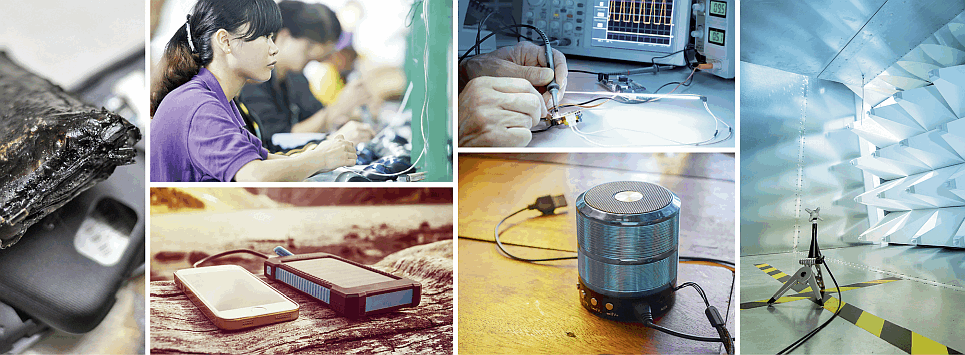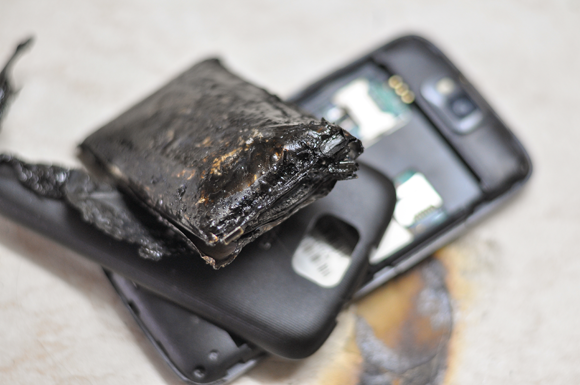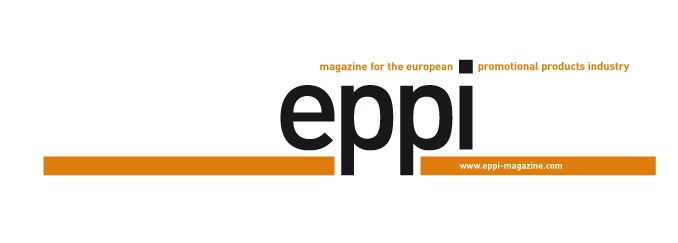Electronic products are indispensable in many areas of life and are experiencing an ongoing boom as haptic advertising media. However, extensive checks have to be carried out before a product can be switched on – because the legislation is strict for any item powered by electricity.

They are omnipresent: Electronic devices from smartphones, computers and TVs, to microwaves, kettles and toasters, through to hairdryers, lamps and hoovers. In the light of this everyday banality, one all too quickly forgets that many devices are real wonders in terms of their engineering skills, but also the fact that wherever electric voltage is involved risks are lurking. It doesn’t occur to us when carrying a power bank around with us that its lithium-ion battery could burst into flames under unfavourable conditions. Nobody takes an enjoyable puff of his vaporiser and imagines the nicotine evaporator could explode. Or turns the drill on and worries about getting a life-endangering electric shock. In most cases this lack of concern is actually justified: “The legislation of the European Union is strict and as long as it is observed guarantees a high level of safety,” stated Artur Smolarek, Product and Quality Manager at the electronic specialists, Zogi. “One can assume that the big consumer brands conscientiously comply with the applicable laws and guidelines. The same applies for the high-quality suppliers on the promotional products market. There are however always a few black sheep here and there, particularly in the online trade, who don’t take product safety and labelling too seriously.” Lorne Spranz, CEO of Spranz, added: “The legal position – including all of the consequences – is clearly regulated, but is interpreted differently by the various market participants and is monitored in varying degrees of strictness by the regional market surveillance and customs offices. Especially where imports into the EU are concerned, it is therefore urgently necessary to convince oneself 100% that all of the regulations are actually observed.”
Those importers that want to make sure that the products they sell satisfy the laws and guidelines applicable in the European Union and are thus entitled to carry the CE label, have to conduct a so-called conformity assessment procedure, in many cases already at the location where they are produced. “Of course, before our products are shipped we want to be sure that they comply with all requirements,” stated Smolarek. “That is why we have a Quality Manager in the Far East, who in collaboration with Bureau Veritas monitors that all of the relevant provisions are abided by. Then our quality assurance department carries out a further test once the goods arrive in Germany, whereby we only conduct simple technical tests to be able to dispatch directly after goods receipt. If necessary, we have more complex tests carried out by Hermes Hansecontrol and TÜV Süd.” Spranz pursues a similar strategy: “We have all of the products tested without exception in line with the necessary guidelines directly on-site by renowned testing institutes, but also have these tests confirmed again by German testing institutes. We work together with Dekra, TÜV, SGS and Bureau Veritas. For many products and product groups we specifically test problem areas for each individual shipment, which can unfortunately also lead to delays if the threshold was exceeded and the goods have to be produced anew.”
Extensive tests
A whole list of different rules applies for bringing electronic items onto the market: The RoHS Directive (Restriction of Hazardous Substances), which serves to limit the use of certain dangerous substances, including lead, mercury, chrome, cadmium and many other substances applies for all electronic products. “The RoHS directive names around 170 dangerous substances that are relevant for us,” explained Smolarek. The international norm series IEC 62321 is the worldwide uniform standard for the physical-chemical testing procedure, which allows the concentration of certain harmful substances in electro-technical products to be determined. The Low Voltage Directive (LVD) 2014/35 EU, is obligatory for “electrical equipment designed for use with a voltage rating of between 50 and 1 000 V for alternating current and between 75 and 1 500 V for direct current”. This stipulates that electronic products have to be made in such a way that they can be connected in an orderly manner, withstand certain strains, are adequately insulated and protected against overloads. Furthermore, no temperatures, beams of light or rays are allowed to arise that could lead to risks, and people, pets and livestock have to be adequately protected against risks occurring through contact.
Extensive testing is also required to ensure the electro-magnetic compatibility: Almost every electric or electronic device generates electro-magnetic fields and sends out or receives electro-magnetic signals. As a result, the devices can constitute among others a safety risk, for instance if they have an effect on the onboard electronics of vehicles or medical products such as pacemakers. In order to rule out such risks, the EU stipulates legal demands regarding the electro-magnetic compatibility in the form of the EMC Directive 2014/30/EU. “In the course of EMC tests, the products are subjected to different simulations and measurements in defined environments – including so-called absorber and mode-stirred chambers,” explained Smolarek. Radios as well as devices that dispose of a Bluetooth or wireless function are additionally subject to the RED (Radio Equipment Directive) 2014/53/ EU. Here, a special conformity assessment procedure as well as in some cases own tests are required.
“Finally anyone, who wants to import and sell on appliances containing lithium-ion batteries – in our industry that primarily applies for power banks – has to take special measures,” continued Smolarek. “The items require a UN transport test UN/DOT 38.3.” This encompasses eight individual tests in total: altitude simulation, a thermal test, vibration, shock, external short cut, an impact test, overcharging and forced discharging. “Good power banks are equipped with both an under and overcharging protection as well as an overvoltage protection,” explained Smolarek. “The undercharging protection prevents the battery from discharging totally, the overcharging protection guarantees that the battery is not loaded with more energy than it can store and the overvoltage protection ensures a constant output voltage so that the connected device is constantly supplied with electricity and is not damaged.” Companies that have secured the conformity of their products cannot however rely on the test result to an unlimited degree; they have to continually stay on the ball. “Product safety is an ongoing process,” according to Smolarek. “We A so-called absorber chamber, where electro-magnetic compatibility tests are carried out. regularly check the legal stipulations for further developments and changes in legislation and forward these to the testing institutes and factories. When we introduce a new product, we scrutinise it carefully beforehand, every new batch is checked and in the case of anomalies we test the products again.” Spranz confirmed: “This involves an extremely high effort, both financially and in terms of personnel, both on-site as well as in the backoffice because the guidelines and norms are continually made stricter and revised.”

Burning batteries, danger for limb and life: Unsafe or poorly tested electronic products can have serious consequences.
Documentation is essential
Once the conformity assessment procedure is completed and a product has run through all necessary test procedures, an EU declaration of conformity has to be generated, which contains the name and a description of the product as well as the name and address of the distributing company and which documents the conformity with the respective relevant legal provisions. The applicable norms for the respective test procedure have to be listed on the declaration. “In addition to the declaration of conformity, technical documents or instructions of use have to be compiled for each product,” reported Smolarek. “Both documents have to be passed on to the next player in the supply chain – in our case that is the promotional products trade. We also place the technical documents, declarations of conformity and certificates on our homepage, where they can be viewed at all times.” Both the conformity declaration as well as the technical documents have to be retained for ten years after the product has been placed on the market.
The subsequent labelling of the product is as equally important as the correct documentation: “Even the offer of non-conform products is a violation of applicable law. The CE label has to be applied to the product in a clearly recognisable manner, if this is technically not possible, it may be stuck on or enclosed with the product,” informed Spranz. “The same applies for the identification including stating the brand, model and/or type directly on the product as well as the name and address of the distributing company – and not just a post box, website or brand as is frequently practised although this is not permissible and can be contested by the market surveillance at any time.” Smolarek advises both re-sellers and end users to be attentive when purchasing goods and to take a close look as to whether the legal provisions are observed and properly documented: “Of course the price is an important criterion – too cheap is always suspicious though – and one should check whether a declaration of conformity is accessible and whether certificates or proof of quality assurance testing are present.” “The consequences can be dramatic,” added Spranz – from notifications of the non-conformity of the goods and their compulsory reexportation or destruction, through to personal prosecution for damage to materials and especially in the case of injury to persons. Distributors, who import themselves are also acting as the distributing company and if the worst comes to the worst will be subject to the painful procedure of international law.” Consequences that nobody wants to experience. After all, the Bluetooth speakers, power banks, torches and co. are supposed to entertain, facilitate everyday life and convey striking advertising messages.
// Till Barth
photos: Shutterstock



